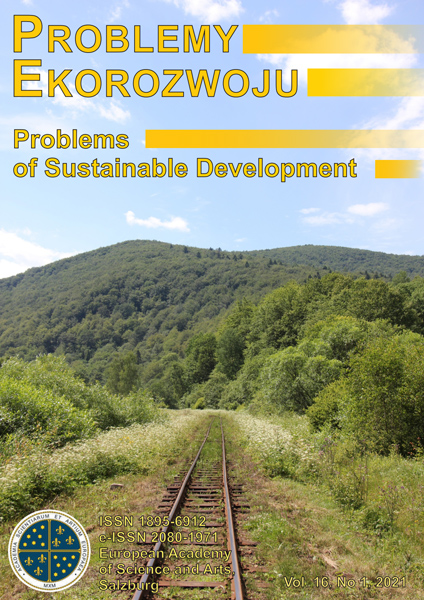Wykorzystanie podziemi: krok w kierunku zrównoważonego rozwoju w prowincji Chuzestan w Iranie
Sohrab Ghaedi
Shahid Chamran University of Ahvaz,
Ahvaz, Khuzestan province, Iran, 6137873396
E-mail: S.ghaedi@scu.ac.ir, ORCID: 0000-0002-4016-6342
Abstract
Reducing the consumption of fossil fuels using underground spaces has a significant impact on the economic, social and environmental dimensions of sustainable development. In this study, the soil layers temperature and thermal comfort in these layers were investigated to make the underground spaces in Khuzestan province. The average summer temperature in the central of Province is about 38°C, which is far from the comfort of the temperature. The surface annual temperature fluctuation in the Province varies from 23.5 in the north of the province to 28.5 °C in the southeast. Investigating the temperature fluctuation in the soil layers shows that it decreases with increasing depth, so that at a depth of 10 meters, the temperature fluctuation is approximately zero and it is equal to the annual average temperature. Therefore to 10 m depth, temperature fluctuation decreases by increasing the depth. The use of underground spaces in the Province can be taken in coping with heat and extreme sunlight, reducing energy and controlling dust and has positive effect on economic, social and environmental dimensions of sustainable development.
Key words: underground space, temperature fluctuation, soil depth temperature, comfort thermal, Khuzestan province
Streszczenie
Zmniejszenie zużycia paliw kopalnych z wykorzystaniem przestrzeni podziemnych ma znaczący wpływ na wymiar gospodarczy, społeczny i środowiskowy zrównoważonego rozwoju. W tym badaniu zbadano temperaturę i komfort cieplny warstw gleby w tych warstwach, aby stworzyć podziemne przestrzenie w prowincji Chuzestan. Średnia temperatura latem w centralnej części prowincji wynosi około 38 ° C, co jest dalekie od komfortowej temperatury. Roczne wahania temperatury powierzchniowej w prowincji wahają się od 23,5 °C na północy prowincji do 28,5 °C na południowym wschodzie. Badanie wahań temperatury w warstwach gleby wykazało, że zmniejsza się ona wraz ze wzrostem głębokości, tak że na głębokości 10 metrów wahania temperatury są w przybliżeniu zerowe i są równe średniej temperaturze rocznej. Dlatego do głębokości 10 m wraz z rosnącą głębokością zmniejszają się wahania temperatury. Wykorzystanie przestrzeni podziemnych w tej prowincji może być wykorzystane do walki z upałem i ekstremalnym nasłonecznieniem, ograniczania zużycia energii i kontrolowania zapylenia oraz ma pozytywny wpływ na wymiar ekonomiczny, społeczny i środowiskowy zrównoważonego rozwoju.
Słowa kluczowe: podziemia, zmiany temperatury, temperatura głębi ziemi, komfort termiczny, prowincja Khuzestan
Problemy Ekorozwoju 16(1)2021: 193-200
DOI: 10.35784/pe.2021.1.21
